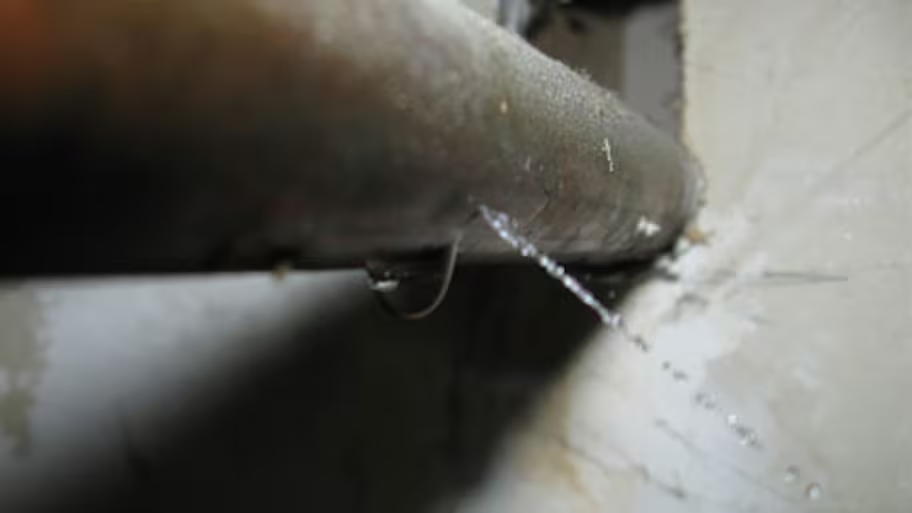The author is making several great annotation about Common Water Leaks In House as a whole in the content underneath.

Leaks not only cause waste of water yet can also trigger unnecessary damage to your house as well as promote unwanted organic growth. Unfortunately, water leaks might go undetected since most of the pipework in our residence is concealed. By recognizing as well as looking for everyday situations that create leakages, you can secure your house from future leaks and unneeded damages. Today, we will consider six leak creates that might be triggering your pipes to drip.
Intruding roots
A lot of water leaks begin outside the home instead than inside it. You might observe wet patches or sinkholes in your backyard, as well as that could suggest that tree roots are getting into water lines creating water to permeate out.
Corroded water supply
As time passes by, your plumbing system ages as well as deterioration such as rust might begin eating away the pipelines. This might be the reason for staining or warping on your water pipes. This asks for an assessment with your plumber quickly. Think about changing the pipes because they are at a higher danger of deterioration than the more recent models if our plumbing system is old.
Defective Pipe Joints
The factor at which your pipes link is regularly the weakest web link in the waterline. Pipe joints can weaken over time, resulting in water leaks. The bulk of pipeline joints are not quickly noticeable. If you have loud pipelines that make ticking or banging sounds, specifically when the hot water is activated, your pipeline joints are possibly under a great deal of stress. It is advisable to have your plumber inspect your system once a year.
Immediate temperature level modifications.
Severe temperature modifications in our pipes can cause them to expand and get all of a sudden. This development as well as tightening may cause cracks in the pipelines, specifically if the temperature level are below freezing. If you maintained an eye on exactly how your plumbing works, it would be best. The visibility of the formerly pointed out scenarios often shows a high danger.
Poor Water Connectors
At times, a leak can be created by loose pipes and pipelines that supply your home appliances. In case of a water connections leakage, you may see water running directly from the supply line or pools around your appliances.
Blocked Drains
Obstructed drains could be frustrating and inconveniencing, but they can sometimes wind up triggering an overflow bring about burst pipelines. Keep eliminating any products that might decrease your drains pipes that could clog them to avoid such aggravations.
All the above are reasons for leaks yet not all water leaks result from plumbing leakages; some leakages might come from roof covering leakages. All leakages should be fixed quickly to avoid water damage.
Leaks not only trigger waste of water yet can additionally cause unneeded damages to your house and also advertise undesirable natural growth. By understanding and also looking for day-to-day scenarios that cause leaks, you can protect your residence from future leaks as well as unnecessary damage. Today, we will certainly look at six leakage causes that might be creating your pipelines to trickle.
At times, a leak can be created by loose tubes and pipes that provide your appliances. In case of a water links leakage, you might observe water running straight from the supply line or pools around your devices.
How To Check For Water Leak In Your Home
How To Check for Leaks
The average household's leaks can account for nearly 10,000 gallons of water wasted every year and ten percent of homes have leaks that waste 90 gallons or more per day. Common types of leaks found in the home are worn toilet flappers, dripping faucets, and other leaking valves. These types of leaks are often easy to fix, requiring only a few tools and hardware that can pay for themselves in water savings. Fixing easily corrected household water leaks can save homeowners about 10 percent on their water bills.
To check for leaks in your home, you first need to determine whether you're wasting water and then identify the source of the leak. Here are some tips for finding leaks:
Take a look at your water usage during a colder month, such as January or February. If a family of four exceeds 12,000 gallons per month, there are serious leaks.
Check your water meter before and after a two-hour period when no water is being used. If the meter changes at all, you probably have a leak.
Identify toilet leaks by placing a drop of food coloring in the toilet tank. If any color shows up in the bowl after 10 minutes, you have a leak. (Be sure to flush immediately after the experiment to avoid staining the tank.)
Examine faucet gaskets and pipe fittings for any water on the outside of the pipe to check for surface leaks.
Undetected water leaks can happen without the home or business owner even realizing. If you suspect a water leak, but not able to find the source. It is time to contact a professional water leak detection service, The Leak Doctor.
How To Find a Water Leak In Your Home
https://www.leakdoctor.com/blog/How-To-Check-For-Water-Leak-In-Your-Home_AE197.html

We hope you enjoyed our article on How to Find Water Leaks. Thank you for taking time to browse our content. Appreciated our blog posting? Please share it. Let others locate it. We treasure reading our article about Common Water Leaks In House.
Immediate attention? Call!